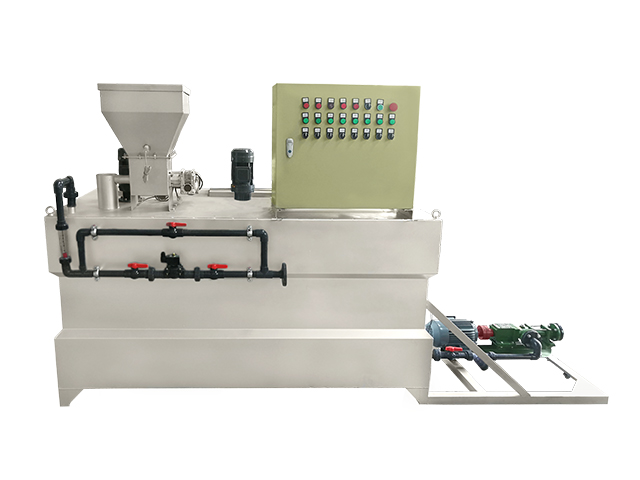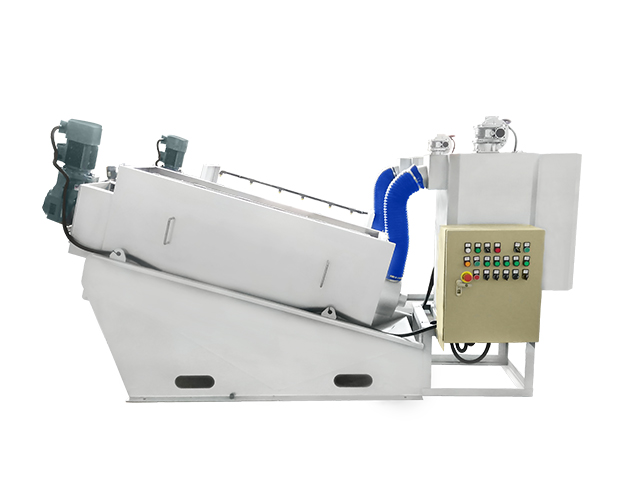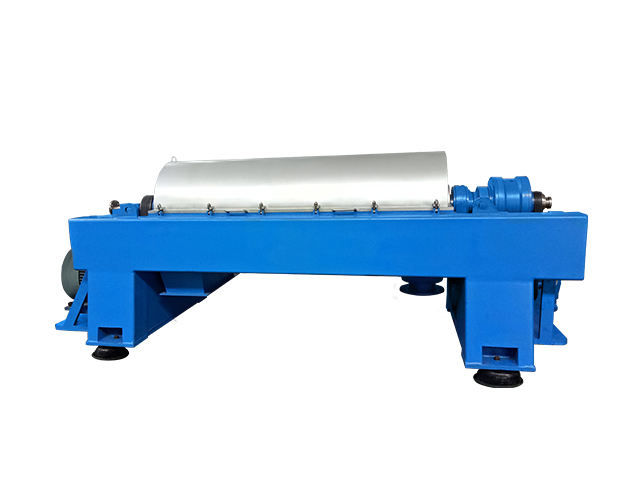
At present, there are many methods for the treatment of printing and dyeing wastewater, and the effects are quite obvious. However, the treatment of sludge is much more complicated and difficult than that of sewage. This is the consensus of the industry. So what is the difficulty in treating printing and dyeing sludge? What is the fundamental reason for the slow progress of the treatment and disposal of printing and dyeing sludge? What are the applicable sludge treatment technologies in China? What foreign experiences can be used for reference? This article will answer the above questions for you.
1. What is the difficulty in treating printing and dyeing sludge?
The printing and dyeing wastewater is treated in the sewage treatment plant. When it meets the discharge standards, the sludge produced has a moisture content of about 80% after mechanical dehydration. The composition of sludge produced by the printing and dyeing industry varies due to the different raw materials, product types, and product processing methods. For example, enterprises using sulfide fuels will inevitably have a higher sulfide content. Generally speaking, printing and dyeing wastewater has the characteristics of large changes in water quality, high concentration of organic pollutants, and large changes in color and pH. Printing and dyeing sludge contains dyes, slurries, auxiliaries, etc., and its composition is very complex. The structure of the dye contains nitro and amino compounds and heavy metal elements such as copper, chromium, zinc, and arsenic. It has great biological toxicity and is highly polluting to the environment, and is a hazardous waste.
In addition, printing and dyeing sludge generally has a high content of inert materials. For example, the sludge produced by denim clothing rinsing wastewater has a high sand content, but low content of organic matter and pathogens, low calorific value, and generally high heavy metal content.
Printing and dyeing wastewater sludge is classified according to the main components it contains, and is divided into two categories: organic sludge and inorganic sludge. Biological sludge is organic sludge, which is mainly composed of organic matter. Typical organic sludge is residual biological sludge. In addition, there is oil sludge and sludge formed by the precipitation of solid organic matter in wastewater. The characteristics of organic sludge are high organic content, easy to decompose and stink, small sludge particles, often in a flocculent state, low relative density, high water content, strong water holding capacity, and not easy to sink. Inorganic sludge is mainly composed of inorganic matter, also known as mud residue, which is sludge produced by chemical treatment methods, such as coagulation precipitation and chemical precipitate. The characteristics of inorganic sludge are high relative density, large group particles, easy precipitation, compaction, dehydration, poor particle water holding capacity, low water content, good sludge stability, no corruption, and poor fluidity.
2. What is the exact proportion of printing and dyeing sludge produced?
After general domestic sewage treatment, 0.3% to 0.5% sludge (water content 97%) is produced, that is, treating 1,000 tons of wastewater produces 3 to 5 cubic meters of sludge, which is dehydrated into about 0.6 cubic meters of dry mud (water content of about 80%).
Due to the high organic content and concentration of printing and dyeing wastewater, the amount of sludge produced by physical and chemical treatment alone can be as high as 1% to 3%. Calculated based on the 1% sludge produced by the biochemical plus physical and chemical treatment process, 10 tons of wet sludge will be produced for every 1,000 tons of dyeing and finishing wastewater treated, which will be 1.5 cubic meters of dry sludge after dehydration. For example, a dyeing and finishing wastewater plant that treats 10,000 tons of wastewater per day will produce 15 cubic meters of dry sludge every day.
According to incomplete statistics, with the rapid economic development, my country discharges about 15,000 tons of printing and dyeing sludge every day. Industry experts said that the treatment and disposal of printing and dyeing sludge has become an important constraint on the sustainable development of many cities in my country.
3. What are the applicable sludge treatment technologies in China?
At present, the methods suitable for the treatment of printing and dyeing wastewater sludge are mainly:
3.1 Anaerobic digestion.
The main purpose of anaerobic digestion of sludge in the treatment of printing and dyeing sludge is to degrade high-molecular substances into low-molecular oxides. While achieving this main purpose, it can also improve the dewatering properties of sludge, reduce the content of pathogens and odor-producing substances. There are two commonly used methods for anaerobic digestion: medium temperature and high temperature. The commonly used medium temperature anaerobic digestion has a theoretical degradation rate of 83% for organic matter at a digestion time of 20 days, and a theoretical degradation rate of 88% for organic matter at 30 days. However, due to the influence of short flow, dosing method, toxic substances, etc., the actual degradation rate is much lower than the theoretical degradation rate, generally only about 60% of the theoretical degradation rate. Therefore, in the actual treatment process, it is believed that when the degradation rate of organic matter reaches 40% to 50%, or when the organic acid content in the digested sludge is less than 300 mg/L, the digested sludge can be considered to be stable. Theoretically, the main product of anaerobic digestion is a mixed gas of CO2 and CH4, commonly known as biogas or sludge gas. The methane content is generally about 60%. In theory, the degradation of each kilogram of COD produces 0.35m³ of methane under standard conditions. The COD in printing and dyeing wastewater sludge is even as high as tens of thousands of ppm. The CH4 obtained from the treatment of printing and dyeing sludge can be used to solve part of the energy demand of sewage treatment plants. In foreign countries, the use of sludge gas can solve about 30% of the energy demand of 30% of sewage treatment plants.
3.2 Aerobic digestion
Aerobic digestion of sludge is divided into two categories: one is the wet method, and the other is the solid method. In comparison, wet aerobic digestion consumes more energy, while solid aerobic digestion has a more complicated operation process.
In wet aerobic digestion, air is directly introduced into the sludge. Microorganisms degrade pollutants under sufficient oxygen conditions. Solid aerobic fermentation, commonly known as "aerobic composting", is a fermentation process using sludge microorganisms. A certain proportion of leavening agents and conditioners such as straw, rice straw, and sawdust are added to the dehydrated sludge. The microbial community oxidizes and decomposes various organic matter in a humid environment and converts them into humus-like substances. Since the pulp, dyes, additives, etc. in printing and dyeing sludge are all difficult-to-degrade organic substances, aerobic digestion requires a lot of energy to be applied to printing and dyeing sludge, and aerobic digestion is generally not suitable for the treatment of printing and dyeing sludge.
3.3 Ultrasonic treatment
Ultrasonic treatment is an emerging and effective mechanical pretreatment method for enhancing the biodegradability of sludge, and it is very effective for the treatment and disposal of sludge in all sewage treatment facilities. Ultrasonic treatment improves the digestibility of sludge by disrupting its original physical, chemical and physiological properties. The degree of disintegration depends on the parameters of the ultrasonic treatment and the characteristics of the sludge. Therefore, the evaluation of the optimal parameters varies depending on the ultrasonic treatment equipment and the treated sludge. The test facilities for ultrasonic treatment showed that the production of biogas increased by 50%. In addition, the energy balance showed that the average ratio of the net energy obtained to the power consumption of the ultrasonic device was 2.5.
In my country, although the research on the use of ultrasound for sludge reduction began at the end of the last century, a large number of studies have only appeared in recent years. Although it started late, it has developed very quickly. Especially in the past three years, China's research on ultrasonic sludge reduction technology has accounted for more than half of the total research. However, the current status of ultrasonic sludge reduction technology in my country in the field of practical application is not optimistic, and cases of using ultrasound for sludge treatment are still relatively rare in my country.
3.4 Biological predation
Microfauna usually refers to protozoa and micro metazoa in sewage treatment projects. Common protozoa in sewage treatment systems include ciliates, flagellates and sarcopterygii, as well as metazoa such as oligochaetes, rotifers and nematodes. The longer the food chain in the ecosystem, the more energy is lost, the less energy is consumed by the synthetic organisms, and the smaller the total amount of organisms. Therefore, the longer the food chain composed of microorganisms such as bacteria and microfauna in the sewage treatment system or the stronger the predation ability of microfauna in the food chain, the smaller the sludge production. In the sewage treatment system, microfauna such as attached peritrichous ciliates, attached oligochaetes and some mollusks can directly feed on bacteria, suspended solids and flocculent activated sludge or biofilm, resulting in sludge reduction. At present, the main processes for reducing sludge by microfauna predation are submerged biofilm method, two-stage bioreactor, direct inoculation of microfauna and earthworm ecological filter.
3.5 High-speed bioreactor
High-speed bioreactor technology is developed based on the use of soil to treat sludge. Since the system is open, the use of microorganisms in the soil to treat sludge will be affected by the temperature and soil moisture, which will limit the time and area of soil use.


